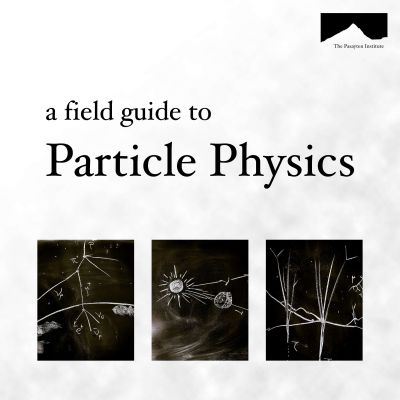This is your informal guide to the subatomic ecosystem we’re all immersed in. In this series, we explore the taxa of particle species and how they interact with one another. Our aim is give us all a better foundation for understanding our place in the universe. The guide starts with a host of different particle species. We’ll talk about their masses, charges and interactions with other particles. We’ll talk about how they are created, how they decay, and what other particles they might be made of.
https://pasayten.org/the-field-guide-to-particle-physics
Gesamtlänge aller Episoden: 6 hours 1 minute
The Alpha Particle : Part 1 : Helium
The Alpha Particle Mini-Series begins with a discussion of Helium gas. What on EARTH does Helium have to do with particle physics?
episode 17: The Higgs Boson
As far as we know, there is no other particle like the Higgs Boson, but there probably should be.
episode 16: The Z Boson
Every once in a while, without warning, an electron is accelerated seemingly out of nowhere. Ripped from whatever atom, molecule or metal it had been associated with, it suddenly becomes it’s own ballistic particle. When this happens, a Z-boson has almost
episode 15: W Boson
With a mass of 80.4 GeV, the W-bosons are heavy particles. On paper, they carry the weak nuclear force and have much in common with the photon and the gluon. But look closely, these bosons are very different beasts.
episode 14: The Gluon
The strong nuclear force - the fundamental force behind the subnuclear junk we find inside the nucleons - is communicated via a particle very similar to the photon. But you’ll have to excuse their name, however apt. The particles that communicate between
episode 13: The Delta Baryons
The Delta baryons are combinations of up and down quarks. They’re like the proton and the neutron, only much more heavy and much less stable. They all seem to have about the same mass - around 1232 MeV, but we don’t really have a good handle on it. That i
episode 12: The Neutral Pion
In many ways, the neutral pion - sometimes call the π0 meson - is closely related to the charged pions. In others, the neutral pion is a truly bizarre little beast.
episode 11: The Charged Pion
There are three kinds of pions: pi plus, pi minus and pi zero. Compared to the proton, they’re quite small and a little quirky. They’re certainly unstable. Today we’ll talk about those charged pions, π±.
episode 10: The Neutron
With a mass of 939.565 MeV, the neutron is the second lightest baryon - that is, a particle made up of three quarks. The neutron's quarks include one up and two downs, so it is total electric charge is zero. The neutron may be electrically neutral, but do
episode 9: The Proton
With a mass of 938.27 MeV, the proton is the lowest energy configuration of a trio of quarks. It has two up quarks and a down, but remember most of that mass is made up of subnuclear goo. You can find protons literally everywhere: from the nuclei of atoms
